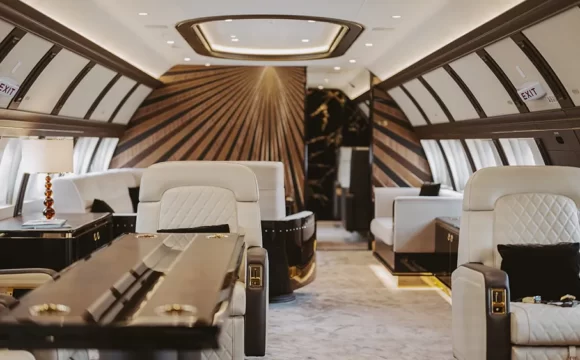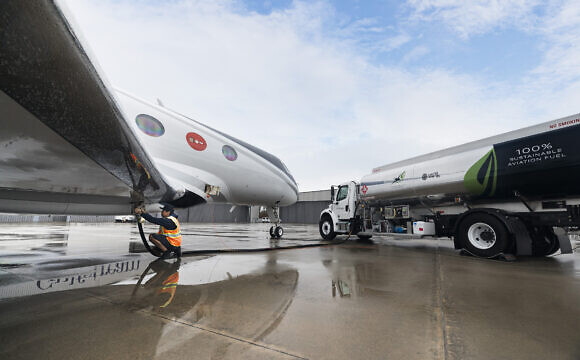การยอมรับการสั่นสะเทือนตามปกติระหว่างเที่ยวบิน นักบินพาณิชย์ส่วนใหญ่จึงไม่อาจรู้ถึงศักยภาพของเสียงที่คมชัด และมีความสูง 45,000 ฟุต แต่อัลโตเอวิเอชั่นสามารถทำได้ ผู้เชี่ยวชาญด้านศูนย์เสียงและความบันเทิงจากแมสซาชูเซตส์ได้ออกแบบการตั้งค่าโฮมเธียเตอร์สำหรับเครื่องบินไอพ่นธุรกิจมาเป็นเวลาสี่ศตวรรษแล้ว และเพิ่งเปิดตัว Alto Soundstage 25th Anniversary Special Edition ใหม่ เมื่อรวมเข้ากับเครื่องบินกัลฟ์สตรีม ฟอลคอน โบอิ้ง และชาเลนเจอร์แล้ว ระบบนี้ให้เสียงคุณภาพออดิโอไฟล์สำหรับที่นั่งภายในโซนมีเดีย โดยใช้ลำโพงแบบซ่อน 6 ตัว และซับวูฟเฟอร์ที่เบาแต่ทรงพลังสองตัว
เอาต์พุตเครื่องขยายเสียงดิจิตอล Class-D, มีการกำจัดความผิดเพี้ยนของ Sinewatch และการชดเชยสัญญาณไดนามิกถูกรวมเข้าด้วยกันเพื่อสร้างคุณภาพเสียงในคอนเสิร์ตฮอลล์สูงถึง 105 DB เทียบเท่ากับคอนเสิร์ตร็อค ในขณะที่บทสนทนาภาพยนตร์ที่พูดเบาๆ ก็ชัดเจนเช่นกัน นั่นค่อนข้างจะเป็นเรื่องยากที่จะทำได้สำเร็จบนเครื่องบินเจ็ต ซึ่งส่วนประกอบต่างๆ จะต้องทรงพลังแต่ยังมีน้ำหนักเบาด้วย “พลังงานทั้งหมดให้เสียงที่ชัดเจนโดยไม่สิ้นเปลืองพลังงาน" Steve Scarlata รองประธานฝ่ายวิศวกรรมและ R&D กล่าว “โฟกัสอยู่ที่เอาท์พุตเสียง ไม่ใช่กำลังไฟฟ้าเข้า"
Having accepted vibration and turbulence as givens, most commercial fliers likely can’t fathom the potential for crystal-clear, immersive sound at 45,000 feet. But Alto Aviation can. The Massachusetts-based audio and entertainment-center specialist has been designing home-theater setups for business jets for a quarter century and recently pulled out all the stops with its new Alto Soundstage 25th Anniversary Special Edition. Already being incorporated into Gulfstream, Falcon, Boeing, and Challenger aircraft, the system provides audiophile-quality sound for seats within the media zone, using six concealed loudspeakers and two light but powerful subwoofers.
Class-D digital amplifier outputs, Sinewatch distortion elimination, and dynamic signal compensation are combined to produce concert- hall-quality sound levels up to 105 DB on par with a rock concert, while soft- spoken movie dialogue comes through just as clearly. That’s quite a trick aboard a jet, where components must be powerful but also lightweight. “All the energy produces clear audio with no wasted power," says Steve Scarlata, vice president of engineering and R&D. “The focus is on sound output, not the power input."








